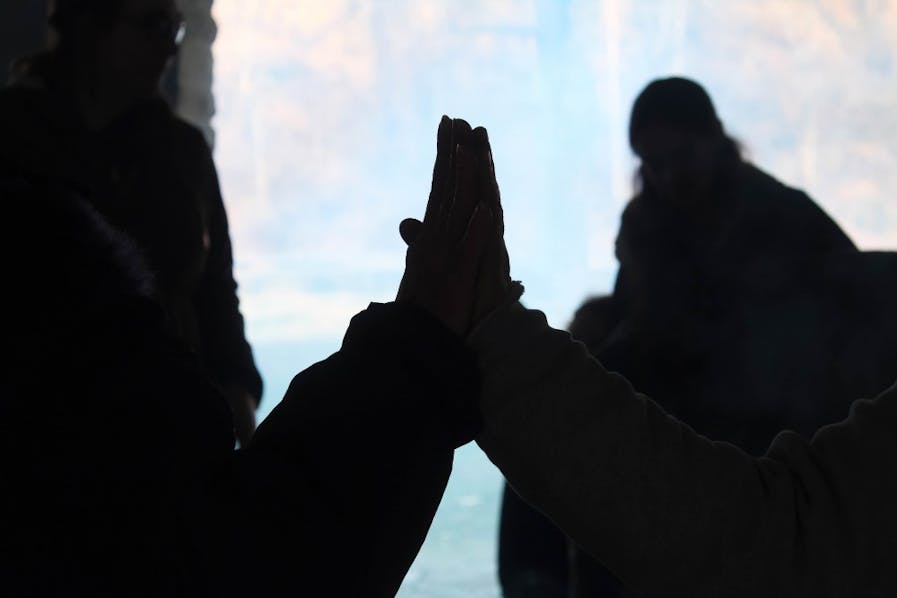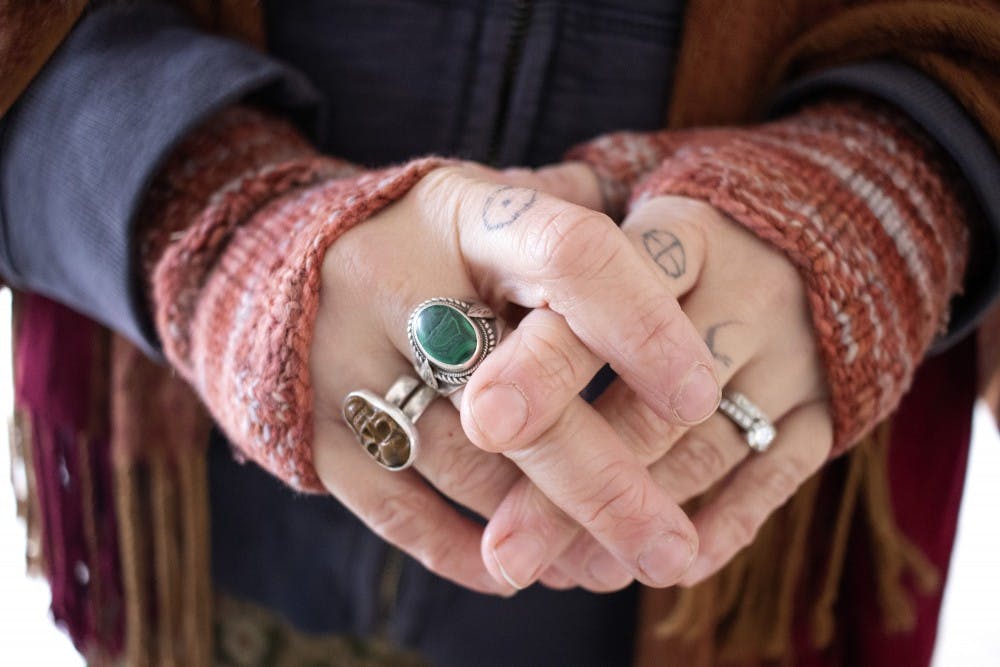Sidney Bolam, 35, began by centering herself. Being completely prepared is the first step to any Black Bear Grove ritual, Bolam said.
She focused on getting rid of all her anxiety. She let go of worries about leaving her kids at home for a few hours and of her new role in leading the ritual.
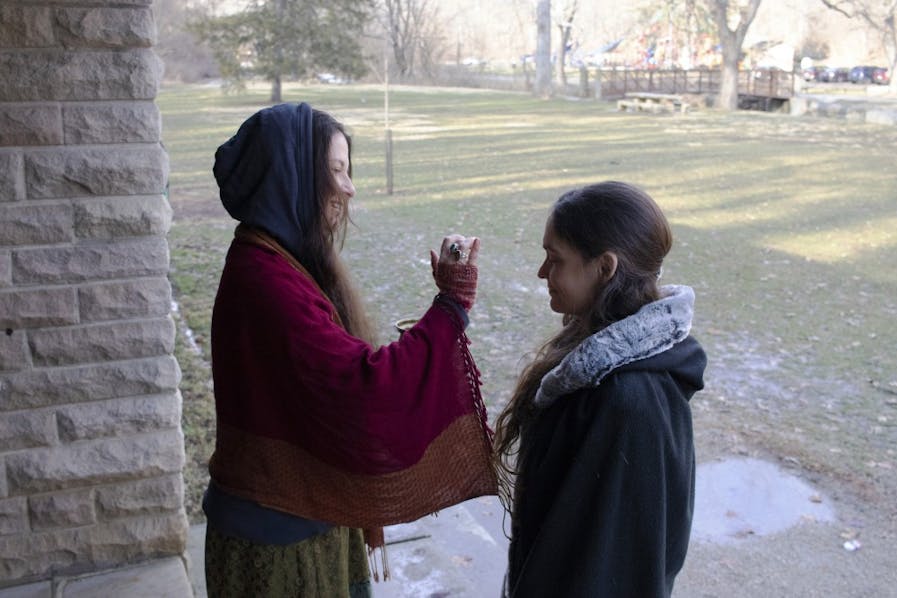
Bolam is part of Black Bear Grove, a Druid fellowship that meets in Bloomington twice a month and organizes rituals every six weeks. Druidry, a branch of paganism, believes in the spiritual nature of life itself.
Groves, or branches, of the Druid Fellowship identify themselves as a group or congregation. All their rituals are public, and they have a strict rule of no blood sacrifices during public ritual, though some may practice that privately.
"There are elements of the occult in all pagan rituals, including ours," Bolam said. "But the occult and a cult are totally different. But I think perhaps uninformed people just lump all of that together."
Isaac Bonewits, who founded A Druid Fellowship in 1983, wrote the guidelines for identifying cults, and Black Bear Grove does not meet them. The guidelines have been used by the FBI.
The group’s main purpose and belief is wildlife conservation, and all of their rituals are in public spaces where anyone can attend, according to the Black Bear Grove website.
“It’s very open, and everyone is very eclectic,” said Pat Robertson, 70, a participant of Black Bear Grove.
Robertson attended IU as an undergraduate and graduate student, but dropped out to pursue writing mystery novels before she received her master's degree.
Robertson and her husband lived in a log cabin they built on the outskirts of Monroe County while they pursued their undergraduate degrees in the 1980s. Robertson, who identifies as an animist and an atheist witch, said she felt bad for cutting down the trees, so she went to each stump to apologize.
Like Robertson, Bolam identifies as an animist, which is the belief that objects, places and creatures all possess a distinct spiritual essence.
Black Bear Grove is a mixture of people who are open and people who don’t want their names to be known. Bolam said she tries to be as transparent as possible about her beliefs and what she’s involved in.
The people who are open in the group want others to know there is nothing to be afraid of. Anyone is welcome to come to a meeting or ritual to see what it’s all about, but they aren’t expected to stay.
“We don’t care if people leave during the meetings,” Bolam said. “We tend to be transparent.”
Bolam has always been fascinated by the natural world.
Her uncle believed in Shamanism, a popular tradition in Native American history that focuses on human connection to nature, which is very similar to paganism.
When Bolam was 11, she told her uncle she was sad that the rituals and beliefs of Native Americans were virtually lost, so he suggested she buy some books on the subject. Those books ended up being her first glimpse into the world of paganism.
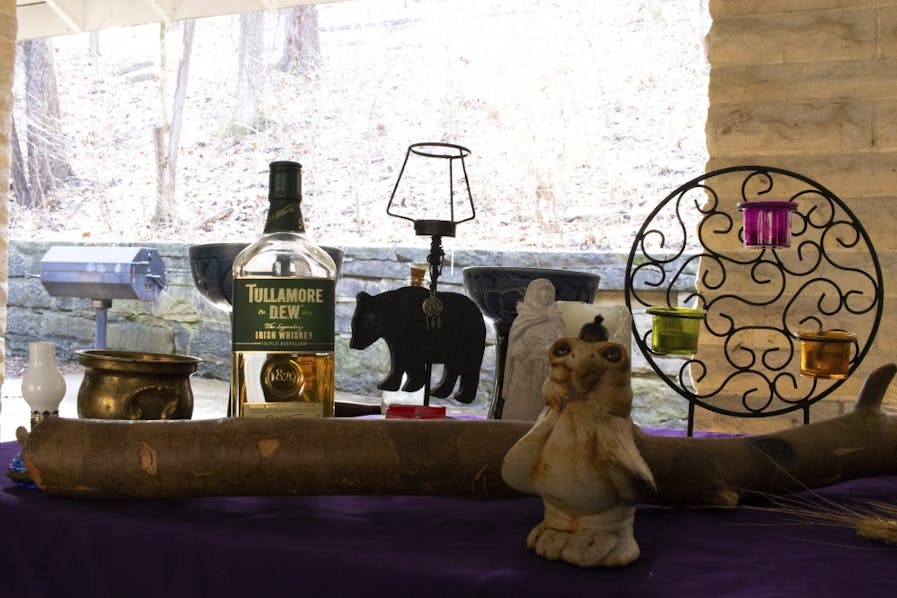
Bolam's religion has created tension between her and her mother. Her mother doesn't like how open Bolam is with her beliefs.
After a ritual with Black Bear Grove, Bolam posted on Facebook about how she enjoyed her day with the Druids. Soon after, her mother’s then-boyfriend, now husband, friended her and started asking questions about what the post meant.
To hide her daughter’s religion, Bolam’s mother told him she was talking about a Dungeons and Dragons group.
Things have lightened up since then, but there’s still a disconnect between Bolam and her mother.
“She doesn’t quite have it right, but she makes an effort,” Bolam said. “It’s really sweet to see her make an effort.”
Bolam is a local artist and limestone carver. She and her family have a few acres of land surrounding their house.
“My yard and I are good friends,” Bolam said.
They don’t have many neighbors, so they have come to know the animals that live on their land. Bolam has organized rituals with Black Bear Grove in her yard, and she also gardens, which makes her feel more connected to nature and its spirits.
“I’m part of its story, it’s not part of my story,” Bolam said. “I’m a passing thing in that yard.”
Unlike many other religions, paganism doesn’t include any specific details on an afterlife.
The majority of members, including Bolam, believe their souls go back into the earth and become part of the environment.
“I think that’s the most sexy thing in the world,” Bolam said.
The purpose of the Imbolc ritual is to usher in spring. The holiday has helped Bolam cope with her seasonal depression, which is heightened in the winter months. It’s positioned between Christmas and Easter, so there isn’t a large gap between big events.
“It helps to mark the passage of time, and it’s almost vital to have something to look forward to,” Bolam said.
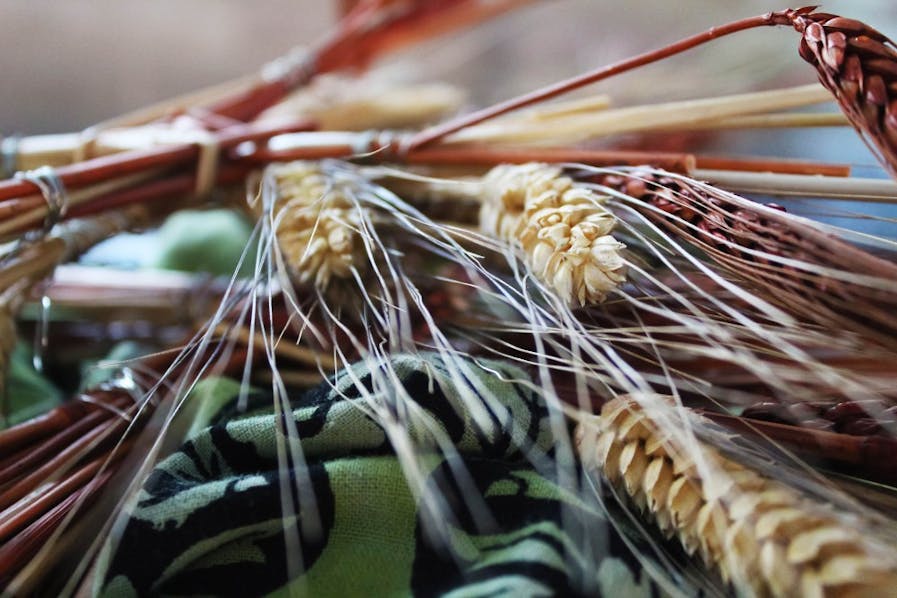
After individual meditation, the sound of an accordion played by a friend of the Grove called everyone back into the shelter. Bolam blessed people as they walked in with water from a Brigid’s well in Ireland. The group ritual began, led by Bolam and a senior Druid of the Grove.
Every participant of the Grove has their reason for honoring Brigid, and Bolam's has to do with her children.
“I just like her,” Bolam said. “I have kids, and she’s a midwife goddess. She has a lot of influence with breastfeeding and healing.”
The group circles around the bonfire in the middle of the shelter, holding each other’s hands to open a portal between worlds. Bolam stands with her left palm facing up, an earth symbol tattooed on her index finger facing the ground. Her right palm faces down, a sun symbol tattooed to match her other hand, facing the sky.
Bolam’s hands pulled from the people around her and came together in a clap.
“Hail and welcome, Brigid,” the group said in unison.
